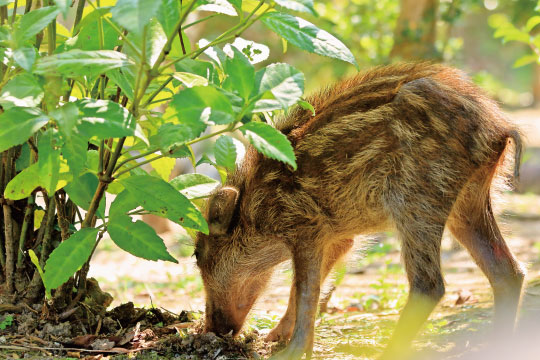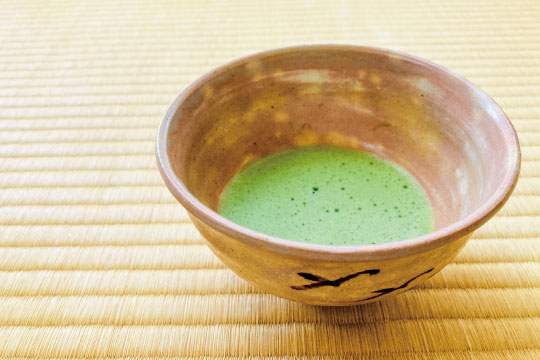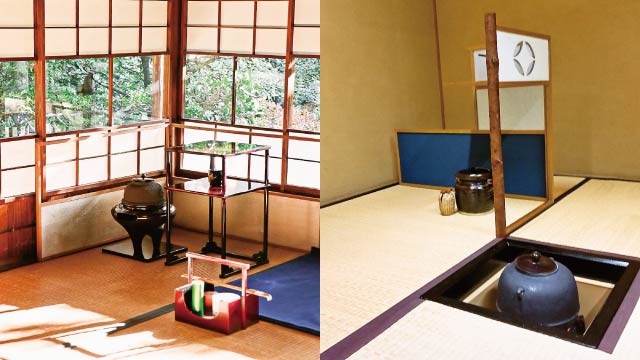News & Blogs
In this blog, we touch on diverse topics about Japanese food cultures, practices together with the culinary secret, TREHA®, and its important role in the Japanese food industry. We hope our blog helps you obtain in-depth knowledge of Japanese cuisine and the science behind it, which is hard to find elsewhere.
Inoko mochi is to help your bloodline continue from generation to generation in a happy and healthy state.
There are many traditional events held year-round in Japan. While some major ones are designated as national holidays, seasonal events are celebrated in the form of ceremonies, festivals, feasts, and special food items including Inoko mochi. The wild boar piglet event, Inoko, is one such seasonal event.
Inoko means "wild boar piglet" in Japanese. The hypothetical origin of the Inoko event is an ancient Chinese custom (亥子祝) to eat rice cake mixed with grains at a specific time and day. In 2021, the rice cake should be consumed during the wild boar time between 9 to 11 pm on the first wild boar day in the wild boar month, which is November 11th. This triple "wild boar" time frame is determined by the ancient Chinese astrology represented by 12 different animals, which has been widely used throughout East Asia together with the lunar calendar. This rice cake made with harvests of the year has been believed to prevent sickness. Later, the event became ceremonial to pray for sound health and good harvests. In addition, wild boars are highly capable of reproducing offspring, which is considered a symbolization of prosperity of a family.
Inoko, a wild boar piglet has another name, "uribo うり坊", directly translated as "a watermelon boy" due to the stripes and a rugby ball-shape of a baby wild boar. Unlike its parents, the adorable figure of uribo is often used as an art motif.

The Inoko event was introduced to Japan during the Heian period (794-1185) and became one of the seasonal events at the Imperial Court. At first, the Inoko was a special event only among nobles in the Imperial Court. Later on, it has spread to the commoners as a fall festival because the Inoko event falls under the harvest time.
Inoko mochi was the delicacy during the festival. Though there are different legends as to the ingredients, a new crop of rice has been used as the main ingredient mixed with seven different ingredients including ground soybeans, red beans, sesame seeds, chestnuts, persimmons, black-eyed peas, and sugar. The mochi was shaped into a wild boar piglet. Modern-day Inoko mochi is a rugby ball-shaped mochi with a sweet red bean filling dusted with roasted soy flour. The shape, ingredients, preparation methods vary by region.
Inoko mochi is a traditional and essential confectionery for a seasonal tea ceremony event.

Why did Inoko mochi become an indispensable confectionery in the tea ceremony?
Because the wild boar is believed to be a messenger of the Marici (Buddhist god of war and fire), it is believed to have a magical power to escape from disastrous fires. In addition, a wild boar has elements of water, which has quiet, cold "yin" energy based on "Inyo Gogyo Shiso (陰陽五行思想)" which is a combination of Yin-Yang (positive and negative, light and shade) and Wu-Xing Thought (Five Elements Theory) introduced by China. Thus, a wild boar has been believed to take superior control of fire. Naturally, a wild boar became a fire safety symbol over time, which is a background of a Japanese custom to start using heating devices (such as kotatsu 炬燵) on the wild boar day.
In the world of tea ceremony, two types of heaters are used in accordance to the season to welcome guests.
A brazier (furo 風炉): It is used in warm weather. It is small and requires a little heat to work. It is placed far from the guest's seatings while still keeping the room temperature low.
Sunken hearth (ro 炉): This enlarged, powerful heater is used in cold weather, which is capable of boiling a large amount of water and effectively generates heat to warm up the guests seated nearby.
Traditionally, the winter hearth is opened on the first wild boar day in wild boar month. Inoko mochi is served together with fresh matcha tea made out of tea leaves that are harvested and matured over the summer. With its significance for fire safety, Inoko mochi became a symbolic confectionary at this seasonal ceremony to open the winter hearth. From late October to November, the shelves of Japanese confectionery stores and some supermarkets are stocked with Inoko mochi throughout Japan. Though its historical background is little known, Inoko mochi is adored as a seasonal delight.
Are you interested in using a wild boar motif to wish for prosperity, success, and fire safety?

Did you find this blog interesting?
Please share it with your friends in the food service industry.
We regularly update the blog about the food culture of Japan, where TREHA® was discovered for culinary applications.
Click here and send us a message to subscribe.
Or hit us up on Instagram @trehalose_sensei!
You might also be interested in:
Japanese traditional food series 2: Chitose Ame, candy for healthy longevity (千歳飴)
Japanese traditional food series 3: Yuzu (柚子) and the winter solstice
Japanese traditional food series 4: Noodles on New Year's Eve (年越しそば)
Japanese traditional food series 5: Japanese traditional New Year’s dishes, Osechi-ryori (おせち料理)
Japanese traditional food series 6: Another traditional food for New Year’s celebration, mochi (餅)
Japanese traditional food series 13: Inari sushi offered to a deity of harvests
Matcha Stories Part 3: Welcome to the imaginary Chakai (茶会), casual tea gathering! 1 of 2
Matcha Stories Part 4: Welcome to the imaginary Chakai (茶会), casual tea gathering! 2 of 2

